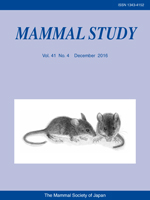A phylogenetic tree was reconstructed based on the mitochondrial cytochrome b gene nucleotide sequences of 169 individuals of house shrews (Suncus murinus and S. montanus) from 44 localities in East Asia, Southeast Asia, West Asia, and islands in the western Indian Ocean. Shrews from China (Zhejiang), Japan (Okinawa), Vietnam, and Indonesia (Java) formed a monophyletic group with less genetic variation. Therefore, the shrews of these regions appeared to have originated from one or a few localities. Contrary to this, shrews from Sri Lanka, Myanmar, and Pakistan consisted of several haplogroups. This finding suggests immigration movements to these areas. Fascinating findings were also obtained concerning the islands in the western Indian Ocean. First, shrews on Zanzibar Island (Tanzania) had almost the same haplotype as those in southwestern Iran. Therefore, the house shrew in Zanzibar may have immigrated from Iran (or vice versa). Second, shrews from Madagascar and Grande Comore Island shared the same haplotype, whereas the shrews on Réunion Island were clearly different from those of Madagascar and Comoros. Thus, there appears to have been several immigration routes to the islands of the western Indian Ocean.
How to translate text using browser tools
1 December 2016
Intraspecific Phylogeny of the House Shrews, Suncus murinus-S. montanus Species Complex, Based on the Mitochondrial Cytochrome b Gene
Satoshi D. Ohdachi,
Gohta Kinoshita,
Sen-ichi Oda,
Masaharu Motokawa,
Takamichi Jogahara,
Satoru Arai,
Son Truong Nguyen,
Hitoshi Suzuki,
Ken Katakura,
Saw Bawm,
Myin Zu Min,
Thida Lay Thwe,
Chandika D. Gamage,
Rosli Hashim,
Hasmahzaiti Omar,
Ibnu Maryanto,
Taher Ghadirian,
Marie Claudine Ranorosoa,
Junji Moribe,
Kimiyuki Tsuchiya
ACCESS THE FULL ARTICLE

Mammal Study
Vol. 41 • No. 4
December 2016
Vol. 41 • No. 4
December 2016
human introduction
immigrations
Indian Ocean
Suncus montanus
Suncus murinus




